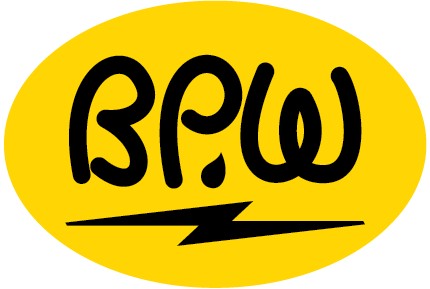Traducción al español de cartas enviadas recientemente sobre concientización sobre el plomo en las tuberías.

Holland Board of Public Works (HBPW) has met all federal and state drinking water regulation standards since the Water Filtration Plant was built in 1957. HBPW takes its obligation to protect customers and families from lead in their drinking water very seriously. HBPW performs lead sampling on a regular basis and tests many homes throughout the distribution system, focusing specifically on higher-risk homes.
Sources of Lead
HBPW sources its drinking water from Lake Michigan, which is a high quality water source that is free of major contaminants. Water supplied by HBPW does not contain lead when it leaves the treatment plant. Also, HBPW’s water distribution system is made of lead-free pipes constructed from cast iron, ductile iron, and various plastics. This means that HBPW drinking water is not exposed to lead during the distribution process, where water from Lake Michigan is pumped through the water mains that lay beneath the streets in our service area.
Each home that HBPW serves is connected to the water main by a water service line. Some older service lines that connect houses to water mains may contain portions of lead. Another potential source of lead is a home’s internal plumbing. Internal plumbing that could contain lead includes lead pipes, lead solder, and fixtures made with brass that contains some lead. Lead pipes and solder were officially banned in 1986, however, fixtures made with brass that contains some lead were not banned until 2014. All of these potential sources can cause lead to be present in drinking water, especially if water sits for a long time near lead sources before use.
The best step to avoiding lead exposure is removing the sources of lead.
As part of new regulations adopted by Michigan, all lead containing service lines will be replaced by HBPW over the next 20 years. It is recommended that you also evaluate other potential sources of lead inside your home plumbing, remove them when possible, and follow best practices to minimize your exposure to lead from any remaining sources. A licensed plumber can help you to identify and remove lead plumbing.
To learn more about reducing your potential exposure to lead please refer to the following resources:
Updated Regulations
In 2018, Michigan adopted the country’s most proactive regulations on lead in drinking water. Prior to the adoption of the new regulations Michigan’s requirements were consistent with the federal lead regulations. The new more-stringent regulations protect public health by requiring Michigan’s public water systems to take additional actions to reduce lead in drinking water. This includes:
-
Lowering the action level of lead in drinking water samples at which utilities must implement or accelerate lead reduction efforts
-
Adopting more thorough methods for sampling drinking water for lead
-
Requiring utilities to inventory lead water service lines
-
Requiring utilities to replace all lead service lines
-
Increasing the amount and transparency of communication with customers
A detailed summary of these changes can be found here:
Lead Service Lines
HBPW has completed an inventory of water service lines and did not identify any service lines made completely out of lead pipe. This inventory was based on information provided in construction records and plumbing inspections that are required when service lines are installed or replaced.
In addition to service lines made completely out of lead pipe, the new state regulations also classify other types of service lines as ‘lead service lines’. Service lines that are made of galvanized pipe but also have a ‘lead gooseneck’ and service lines that were previously connected to a lead gooseneck are now classified as lead service lines.
A lead gooseneck is a very short section of lead pipe that connects the water main to the galvanized service line. Lead goosenecks were used because lead pipe is flexible and could easily be bent to match up the end of a stiffer galvanized service line to the water main.
These galvanized service lines are now classified as lead service lines because lead particles from the lead goosenecks could migrate and accumulate in the service lines between the water main and the home, even after removal of the lead gooseneck.
HBPW has had a longstanding practice of proactively removing and replacing lead goosenecks. To date HBPW has removed more than 2,000 of the approximately 4,000 lead goosenecks originally installed in the water system. During these replacements, HBPW also replaced the portion of the galvanized service line from the water main to the shut off valve at the property boundary. The remaining sections of these 2,000 services from the shut off valve into the home are also included in the new replacement requirements.
If you would like to check the material of your water service from Holland BPW’s records please email your name, address, and request to HBPWWaterSewer@hollandbpw.com or call 616-355-1643.
Lead Service Line Replacements
Michigan’s new regulations require that public water systems replace all lead service lines at the water system’s expense over a 20 year period starting in 2021. The regulations also require that this replacement include the portion of the water service line from the outside shut off valve into the home that is typically the homeowner’s responsibility.
HBPW began replacements ahead of the required schedule and replaced more than 100 lead service lines in 2019 as part of a water main replacement project in 19th St. Completed water main replacement projects that will included lead service line replacements include:
-
2023
-
W. 28th St., W. 29th St., Wildwood Dr. main replacement
-
18th St from Cleveland Ave. to College Ave.
-
-
2024
-
Morningside Dr. & Kenwood Dr.
-
Additional projects to be determined.
-
Service line replacements are typically performed as part of larger efforts that allow HBPW to leverage limited resources for the maximum benefit of our customers. Projects will continue in further years beyond the above projects and will be prioritized based on multiple factors including the location of critical and at-risk populations, the prevalence of lead service lines in an area, the age of piping and number of water main breaks in an area, and partnership opportunities with other City projects to allow sharing of resources.
Sampling
HBPW has been sampling water from inside homes with lead service lines since sampling was first required as part of the 1991 federal lead and copper rules. The sampling is required to ensure that exposure to lead is minimized and is lower than an ‘action level’ that is currently set at 15 parts per billion (0.015 mg/L) of lead. As part of the new regulations this threshold will be lowered to 12 parts per billion (0.012 mg/L) starting in 2025.
HBPW’s sampling results have consistently been well below the current and future action levels. The most recent sampling found that 90 percent of the samples collected fell below 1 part per billion of lead (0.001 mg/L). The highest result was 2.9 parts per billion (0.0029 mg/L).
If you would like to test your water for lead, HBPW recommends that you contact your county's health department.
The Ottawa and Allegan County Health Departments have established relationships with local laboratories and can provide low cost testing kits. For more information please contact the Ottawa County Department of Public Health at (616) 396-5266.
Other Sources of Lead
In addition to lead from service lines and internal plumbing it is important for homeowners to understand other potential sources of lead. Lead poisoning may also be caused by lead-containing paint, toys, or other household items. For additional information, visit:
Additional Resources
Below are some resources that provide additional detailed information on lead in drinking water:

